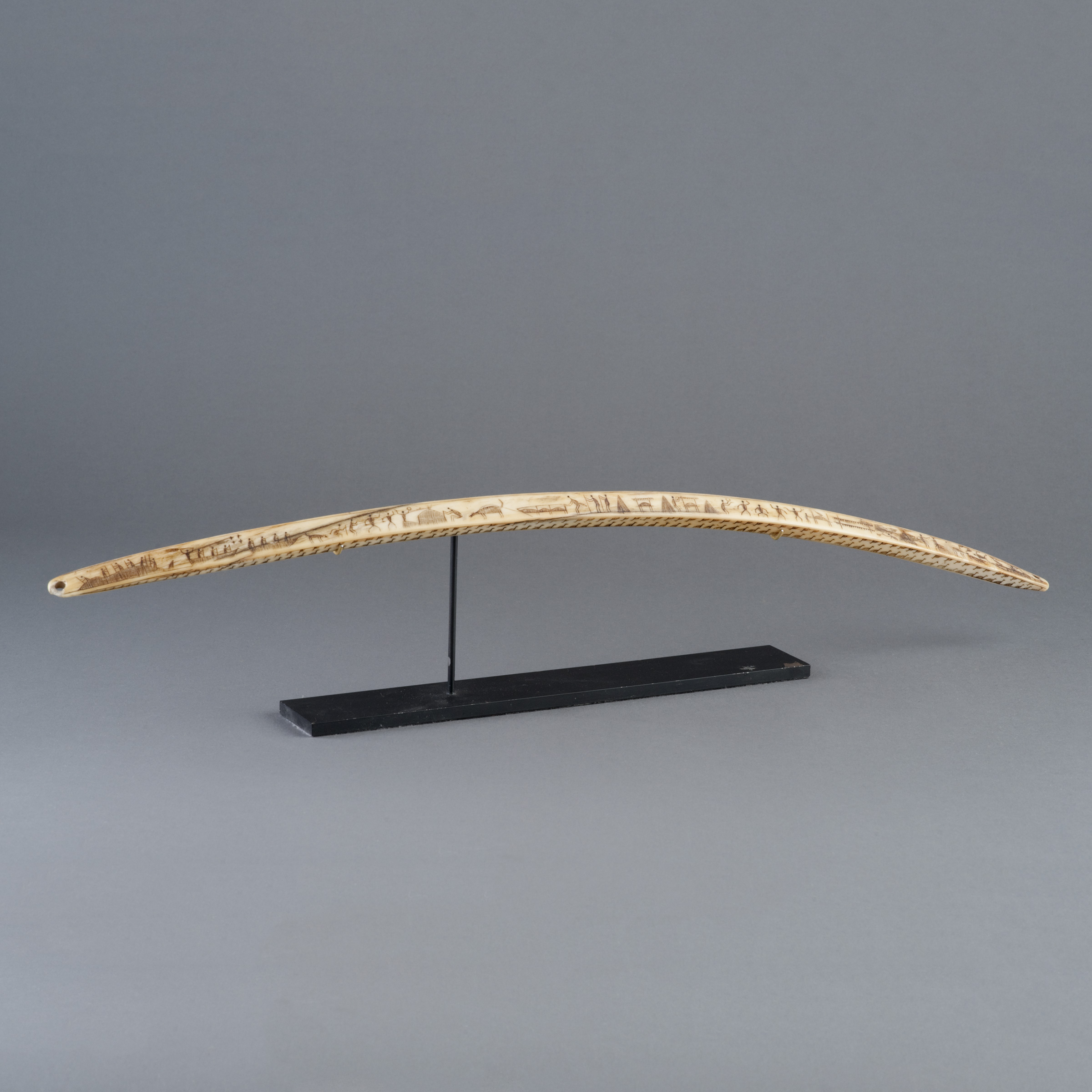Lot 134

Note:
Bow drills are used for piercing holes and for engraving works. The black paint was created from charcoal or gunpowder. The drill part is generally wooden with a point, made to revolve rapidly forwards and backwards. A raw hide thong would be passed around it twice, and then fastened to the bow at each end and sewn back and forth, with the drill usually being held in the user's teeth.
These types of engravings were in considerable vogue with Europeans in the 19th century, as they portrayed silhouettes of typical Inuit day to day life. However, ivories excavated in Cape Prince of Wales, Alaska dated from 1000 AD show that this was a genuinely Inuit artistic style, which had originated in the Bering Strait in prehistoric times. The excavated ivory depicted representations of four men in an umiak harpooning a whale, with two men in kayaks throwing bird spears at loons. This tradition of engraving seems to represent the backbone from which the later pictorial engravings emerged.
Susan M. Pearce, Eskimo Carving, Shire Publication, UK, 1985, page 14-15, 46


